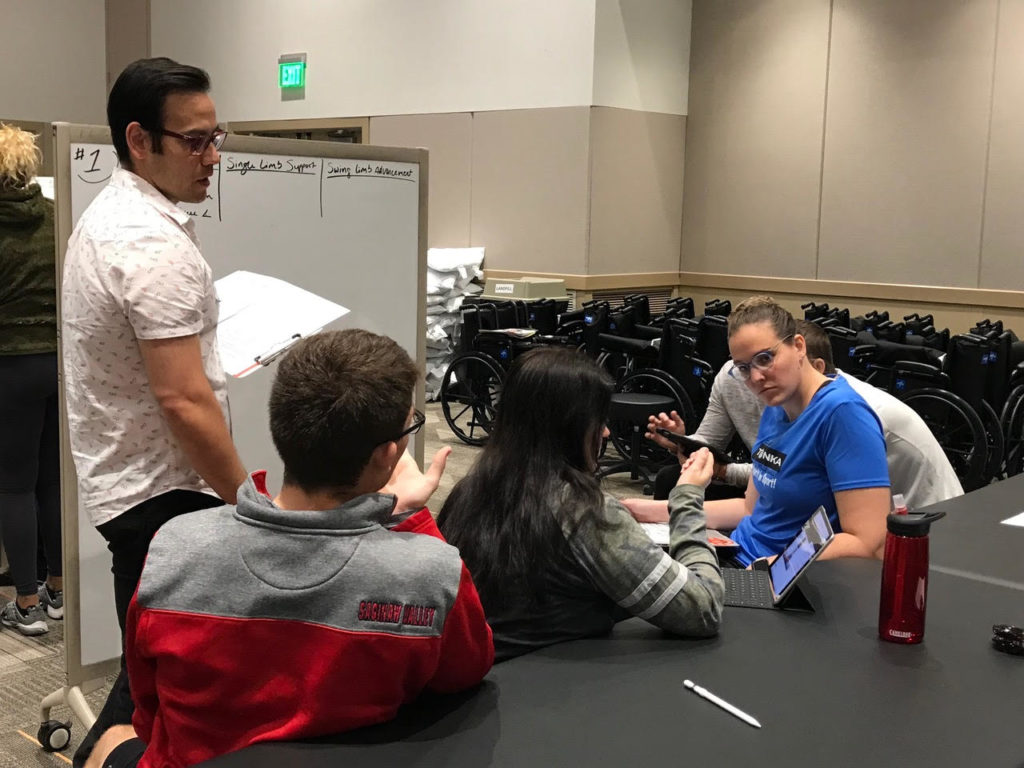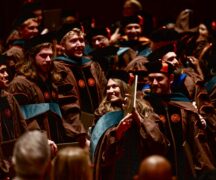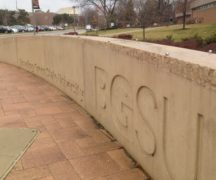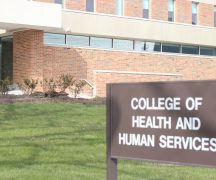By DAVID DUPONT
BG Independent News
Emma Hann found her calling to become a physical therapist when her younger brother injured his meniscus playing football.
“I was able to go with him and see the rehabilitation process as he was getting better, and it made me fall in love with the profession,” the 22-year-old from Dover said.
BGSU’s new doctorate in physical therapy program is helping her realize that dream.
Students and faculty arrived on campus this week for the in-person sessions of the hybrid program. The two-week lab immersion sessions are the first for the 98 students from around the country in the program’s first cohort. The on-campus sessions deliver hands on instruction.
Students will attend six immersion sessions over the two-year program. The rest of the time they take classes remotely.
Hann said that having taken online courses while studying health sciences at Ohio State during the pandemic she felt comfortable with the format. There were also more than double the number of spots available. And this program didn’t require her to move.
Hanna Airhart, 23, from Maumee said a major draw of the program was that she could complete it in two years and then work as physical therapist. Traditional programs take three years.

The physical therapy doctorate is part of the university’s initiative to bolster its offerings in the health field.
Stephanie Thurmond, director of the School of Physical Therapy, said there’s been a shortage of physical therapists for 30 years. That dearth of practitioners is especially felt in rural and other underserved areas. The program aims to address that.
This fits with the university’s mission to be “a public university for the public good.”
“This program makes room for students who don’t live geographically near a traditional program and don’t have the ability to uproot,” said Emelia McCuen, one of the program 10 clinical professors.
“We are hoping that they will return to those underserved areas,” Thurmond said.
Like the students, faculty members live around the country – Thurmond and McCuen, both live in Texas.
Thurmond said the program’s flexibility is also helping to address the lack of diversity in the profession. Currently 5-10% of practitioners identify as being in a minority. In the first cohort in the BGSU program, 37 percent identify as being in a minority.
Hann was impressed with the program’s emphasis on diversity and belonging. That helped confirm, her decision, to enroll. “That’s always discussed, but not really set in their values. Diversity and belonging is set in every aspect of this program.”
Hann said having people from different areas and different stages of life is an advantage. “It’s been so nice to have other people’s expertise.”
Some students are already physical therapy assistants, or exercise science majors or athletic trainers.
“Everybody has some type of niche that they are comfortable with and they are able to contribute that.”
Airhart agreed. She feels comfortable approaching those with more experience and knowledge with questions.
Hann said the program puts emphasis on clinical reasoning. That enables students to try to figure out why a patient is in pain. In traditional program, this is usually taught in the clinical stage.
In the BGSU program in is integrated throughout.
Hann said students have “synch sessions” with faculty and students on Tuesday, Wednesday and Thursday with the rest of the week devoted to learning that week’s material and reviewing. “It’s a doctoral program so you should be able to learn material and apply it,” she said.
The program is accelerated, Thurmond said, with students expected to devote 50 hours a week to their academic work.
While some students may be employed, that is not the expectation. “It’s not advisable,” she said, though some do choose to have jobs on the evenings and weekends. Students are eligible for financial aid, and, she noted, they graduate a year early, and can start earning a salary.
“We focus on what they need to know to be a generalist entry-level practitioner,” she said.
The program does not have electives, nor does it offer introduction to specialties within the field. “We are getting those students to the point to obtain a license in physical therapy and then they are free to pursue any sort of specialty after that.”
The program looked at the criteria set by the Commission on Accreditation for Physical Therapy Education. “They mandate certain criteria and timelines, and we stay close to those specific requirements, and we don’t add anything else.”
BGSU is working with Evidence in Motion to help with logistics and design for the program.
The company helps set up clinical placements throughout the country, and the design for online and video courses.
“They’ve been in physical therapy education for 20 years,” Thurmond noted.
But, “they have no input into the actual content of the courses.” That is the responsibility of the faculty.
This is the only program of its kind in Ohio.
The 98 students in the first cohort, is more than the 80 that had been anticipated. The program should be able to accept as many as 110 each year.
Hann said that she was impressed with the relationship her brother developed with his physical therapist.
“I’m a people person,” she said. “I love interacting with people. Physical therapy offers a unique opportunity. Patients are in a state of vulnerability. They’re in pain. They’re seeking help.”
The physical therapist is a guide, and a sense of trust is necessary to the treatment, Hann said. The therapist knows that the patient is in pain, and the treatment is going to make them uncomfortable.
Having that trust between the physical therapist and patient is what encourage the patient who knows this is uncomfortable to acknowledge that the therapist knows what they’re talking about, and realize that “I don’t want to do it but I know this will help me in the long run.”




